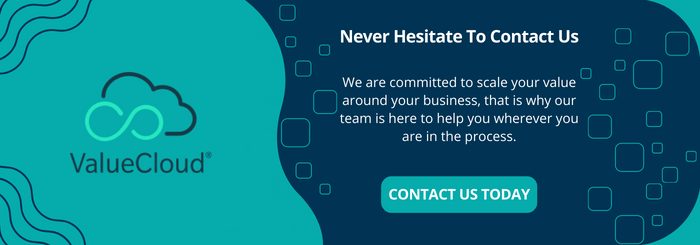KPIs to Measure Customer Success

Customer success is shifting from being measured in terms of analytics and metrics to customer value. The change is attributed to a more customer-centric market with new consumer demands and advancing technology. As a result, your key performance indicators (KPIs) to measure customer success must also adapt to continue to thrive in today’s business environment.
Here is where value realization comes into effect, or when prospects realize the value your organization and its products or services provide them. A realized value leads to a decreased churn rate and increased customer loyalty and satisfaction. Fortunately, there are a few ways you can use KPIs to measure customer success through a value-focused lens.
This guide will cover the importance of value KPIs and the top strategies to measure customer success today.
Why It’s Essential to Measure Customer Success KPIs
Before exploring modern-day customer success KPI strategies, it’s essential to understand its benefits to your business:
- Less dependency on customer acquisition: Acquiring new customers costs five times more than keeping an existing one. Learning what works for your current users allows you to focus on consistently delivering the value that they enjoy and save costs at the same time.
- Higher potential of upselling: Additionally, you can invest your time, effort, and resources into upselling customers to buy additional, valuable features of your products or services.
- Increase your retention rate: Lastly, you can have a high customer retention rate, promoting the health and success of your company.
Top Five KPIs to Track
The below five KPI strategies will aid you on your journey to valuable customer success management.
1) Customer Churn Rate
Keeping track of your churn rate, or the number of consumers who no longer use your product or service, is a key indicator of customer success (or lack thereof).
You can calculate your churn rate by dividing the number of churned customers by your total number of customers. Furthermore, you can complete your churn rate calculations at various times, such as quarter by quarter or annually, depending on your business needs.
Knowing your churn rate will help you determine where and when users start losing value. You can take the process further by asking for feedback when patrons leave. For instance, perhaps they are having technical difficulties, or your product or service is losing a key functionality. The feedback you receive will tell you where to focus your efforts and help you understand where your value lies.
2) Monthly Recurring Rate (MRR)
If you provide a subscription product or service, it’s vital to know your monthly recurring rate, or MRR. Like your churn rate, your MRR will pinpoint weak points that you can improve upon. Knowing your MRR will also help you plan for financial forecasting. You’ll have a better, more predictable idea of your cash flow.
The MRR formula includes multiplying your number of subscribers by the average revenue per user (ARPU). Once you have the number, you can work with both your customer success teams and marketing staff to appeal to customers at the right time.
3) Product Adoption
A customer success KPI that’s particularly beneficial to understand your value is increasing product adoption. This is when customers become aware of your product or service and become reoccurring users.
Unlike churn rate and MRR, your product adoption will tell you precisely what’s working and the exact value you provide consumers. This assists you in understanding the long-term and lifetime value you give users.
As for product adoption measures to monitor, you can look at factors such as:
- Which products or services turn occasional users into frequent users
- The speed of product adoption
- How much customers spend throughout their customer lifetime
Once you’re armed with this information and data, you can plan for continued advancements and investments in products or services that bring you success.
4) Net Promoter Score
Measuring customer satisfaction is another critical step in understanding customer success and value. One of the top ways to measure satisfaction is through a Net Promoter Score or NPS. Having launched nearly twenty years ago, the NPS measurement has aided businesses worldwide in understanding how satisfied customers are with one question: “How likely are you to recommend us to a friend or colleague?”
From there, customers are put into one of three categories:
- Promoters, or those likely to recommend your organization and continue to use your products or services
- Passives, or those who feel indifferent to your company
- Detractors, or those who are unsatisfied and find little to no value from your brand
In addition to the initial question, you can also ask NPS users to give specific feedback on their rating of your brand. This feedback will let you know what value you should continue implementing and what value you should begin to include.
5) Customer Support
The last KPI to measure is your customer support. The simplest and most effective way to gather these metrics is through your customer support tickets. This includes the number of tickets you receive, your customer support team’s response time, and the ticket resolution rate. If you find that your ticket volume is high and the time it takes to respond and solve issues is long, it may be time to re-evaluate your support efforts.
You can look at the source of the support inquiries to see any trends that are not easily solved. For instance, customers may have problems with upgrades or using a particular feature. These problems reflect what products, services, or values may be missing from your organization, giving you another source to learn from.
The Takeaway
KPIs to measure customer success in terms of customer value will set up your organization for growth in an ever-evolving business atmosphere. Furthermore, using this strategy increases your own company’s value in terms of profits, health, and reputation.
If you would like to further explore the meaning of value realization in today’s work climate, get in contact with DecisionLink. Our ValueCloud solutions and technology can help you approach customer success with the precision and focus needed to succeed today.

 ValueCloud
ValueCloud
.png?width=118&height=76&name=Rectangle%20(3).png) ValueCloud Ignite
ValueCloud Ignite
.png?width=92&height=92&name=Rectangle%20(4).png) Free Assessment
Free Assessment
.png?width=100&height=100&name=Rectangle%20(5).png) Watch a Demo
Watch a Demo
.png?width=82&height=96&name=Rectangle%20(6).png) Value Calculator
Value Calculator

.png?width=62&height=51&name=Group%2010%20(1).png) Marketing
Marketing
 Sales
Sales
 Customer Success
Customer Success
 Engage Prospects
Engage Prospects
 Win Deals Faster
Win Deals Faster
 Retain Customers
Retain Customers
.png?width=62&height=62&name=Rectangle%20(8).png) Adopt and Scale
Adopt and Scale
.png?width=54&height=54&name=Rectangle%20(9).png) Cybersecurity
Cybersecurity
 Healthcare
Healthcare
.png?width=54&height=54&name=Rectangle%20(10).png) IT & Software
IT & Software




